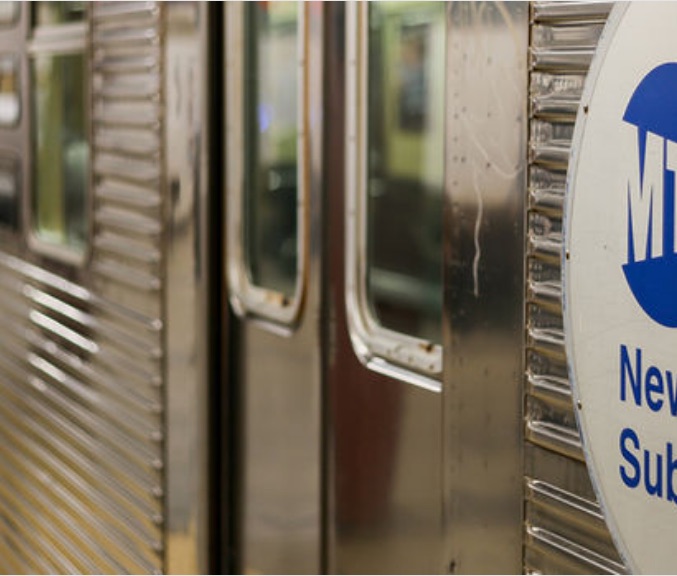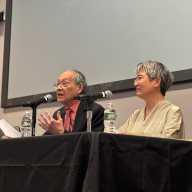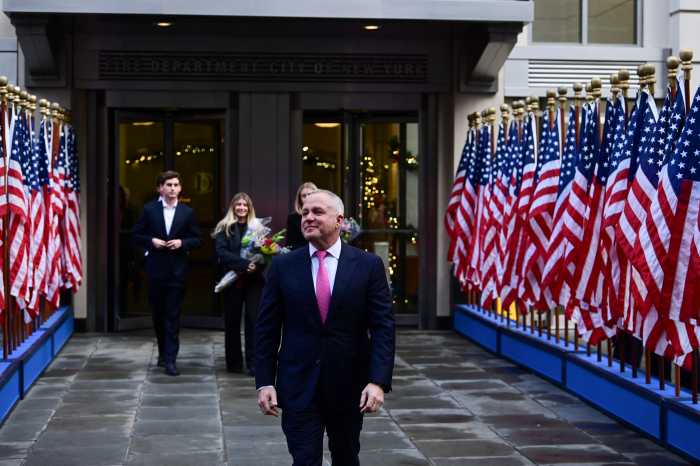via Office of Governor Andrew Cuomo
Feb. 26, 2019 By Nathaly Pesantez
Mayor Bill de Blasio and Governor Andrew Cuomo announced their joint endorsement today of congestion pricing as part of a new plan to “transform and fund the MTA.”
The surprise two-pronged announcement marks the first time the two leaders see eye-to-eye on the controversial and long-deliberated measure, which aims to decrease vehicle congestion on the busiest of Manhattan streets by way of a price point for drivers. The revenue from congestion pricing, meanwhile, would be used to finance the Metropolitan Transportation Authority in the new plan that includes “fundamental” changes to the organization.
De Blasio had previously called for a “millionaire’s tax” instead of congestion pricing, whereas Cuomo had pushed for the latter, even convening a panel to outline an initial congestion pricing plan and making the measure a priority in his recent State of the State address.
“Congestion pricing is an idea whose time has come,” Cuomo said on The Brian Lehrer Show. “We’ve talked about it for years. We’ve tried to get it done for years and I believe this is the year to actually get it done.”
De Blasio similarly spoke to the urgency in pushing congestion pricing through sooner rather than later.
“This crisis runs deeper than ever before, and it’s now clear there is no way to address it without congestion pricing and other dedicated revenue streams,” he said.
He added: “I still believe a Millionaires Tax provides the best, most sustainable revenue source for the transit improvements our city needs. But the time to act is running out, and among all alternatives, congestion pricing has the greatest prospects for immediate success.”
Drivers, under the congestion pricing model in the multi-point plan, would pay to enter Manhattan below 61st Street—otherwise known as the Central Business District (CBD)—by way of electronic tolling devices installed at the district’s perimeters in a system anticipated to be in place no later than the end of 2020.
The tolls would be variable and depend on off-peak hour travel, but will ultimately be set once the electronic tolling infrastructure is in place. The system will account for tolls previously paid by drivers entering Manhattan from designated crossings. Discounted fares will also be available for select groups, including vehicles carrying people with disabilities.
The congestion pricing revenues, in turn, will be placed in a “lockbox” to ensure a funding source for MTA capital needs can be met. Priority for the funds will be given to a lineup of NYCT items including the subway system, new signaling, new subway cars, track and car repair and accessibility.
Streams from a new internet sales tax would also help fund the transit authority, along with revenue from legal marijuana sales–two new measures slipped into the announcement.
Another point in the new MTA Transformation Plan calls for a “reorganization” of the agency to run more efficiently and effectively. The six entities under the authority, for example, including New York City Transit, the Long Island Rail Road, MTA Capital Construction and more, will have common functions consolidated into a central operation as opposed to operating as separate groups.
The entities will continue to individually focus on day-to-day management, but areas like construction management, engineering, human resources and advertising will be condensed into one streamlined plan. The restructuring is expected to be completed by June.
“This proposal is a holistic cure for much of what ails the MTA, and I hope to see it enacted swiftly for the benefit of our 8.5 million daily customers,” said Fernando Ferrer, acting MTA Chair.
The plan also outlines steps for the city and state to jointly combat fare evasion on the subways. An enforcement strategy will be developed along with the city’s District Attorneys, and stations will be redesigned so that fare evasion is not criminalized but rather prevented.
As far as the agency’s Capital Plan, it will be reviewed by a committee of transportation, engineering and government experts “who have no existing financial relationship with the MTA” under the new plan. The committee will have appointees by the governor, mayor and state legislature along with transit activist representatives.
The MTA will also go through an independent audit to determine the agency’s actual assets and liabilities. An initial audit will wrap up no later than January 2020.
Changes to the major construction projects process and MTA board terms are also expected among other steps in the plan, which all require support from the state legislature to go through as envisioned as part of this year’s new budget.
The announcement was met with praise by transit advocates who have made congestion pricing among the focal points of their efforts to improve transportation in the city.
“The agreement reflects a growing recognition that congestion pricing alone won’t solve the transit crisis, but that it is the single largest source of revenue on the table and should be the cornerstone of a bigger funding package,” said John Raskin, executive director of the Riders Alliance. “The transit crisis is urgent and it won’t go away without billions of dollars to upgrade equipment and modernize the transit system. The governor and the mayor are on board; transit riders are looking to our representatives in the state legislature to do their part.”
The Senate Democrats, according to reports, said they will discuss the proposals as a conference and work with all parties to “move forward on solutions to the MTA catastrophe.”
“Clearly there is a crucial need for a dedicated stream of revenue to fix the crumbling MTA.” the statement reads.
To view the new, full plan, click here.
This is a developing story. Check back for more details.



































